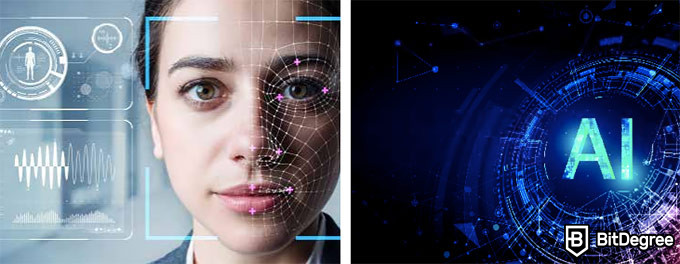
Artificial intelligence is a key way to grow your business. For passport control at airports, facial recognition is used already. Retinal examination is another application of this technology. Using focused personalisation enables companies to better understand their target markets and develop future product offerings based on detailed usage data. Search engines will display better results when machine learning is applied. It will be possible to train algorithms that can recognize what people say and what they are seeing.
Machine learning
The early AI community sought to use the principles of artificial Intelligence to solve human problems. This term is machine learning. The early AI enthusiasts used this term to describe the development of algorithms that would learn to recognize objects, learn patterns, and make predictions based on data. In recent years, artificial neural networks or deep learning algorithms have been the center of attention. These tools have the potential for solving complex problems like distinguishing between a fox and a dog.
Deep learning
In the last decade, AI has seen a lot of changes. Machine learning is at forefront of this transformation. Machine learning has allowed us to make more intelligent decisions with less effort. AI systems can draw conclusions from large amounts and not depend on a programmer. Machine learning algorithms are based upon ordinary statistics, and can be as simple or complex as OLS regression. With machine learning becoming increasingly complex, new advances are being made every day.

Recognizing objects
Machine learning and deeplearning algorithms include object recognition. It allows computers to identify objects within images and videos. This is a critical technique in computer-vision. Compared to humans, computers are much better at recognizing objects in images and videos than they are at identifying human faces and voices. The purpose of object recognition is for computers to recognize the objects and scenes that they see. Here are some examples of how object recognition works.
Speech recognition
The use of speech recognition technology allows machines interact with human beings. Nowadays, mobile devices and computers are equipped with speech recognition software. A good speech recognition tool can be intuitive to use, run in a background, and gain more accuracy over time as it collects more data on speech. Here are some of the top benefits of speech recognition software:
Machine translation
Machine translation is an important application of artificial intelligence in the field. The goal of machine translation is to translate texts from one language to another. Human translations are still the best, but ML still fails in many areas. This is especially true for medical and legal documents which contain specialized terminology that is not easy to translate. It is also difficult to translate many concepts related to mental health.
To train ML algorithms, huge amounts of data are required
The algorithm's ability to predict a particular set of variables and features will be determined by the size of the data. As a rule of thumb, the more variables and features that are used, the more data is needed. Let's take, for example, the ability to predict the house's price based on its size, location, and neighborhood. The training data could be a table that shows the average house price in a given neighborhood, its features and their prices. This allows the model to be trained by simply changing the columns.

Impact on industry
AI in logistics promises lower shipping costs, faster delivery times and better data analysis. Logistic companies can use new technologies to match images or voices with different types of data. For instance, China's Climate & Sustainability Program matches video images with travel records, social media activity, and personal identity into an integrated database called the "police cloud." This database can assist law enforcement authorities in tracking criminals, identifying trends, and modeling the effect of new developments upon the environment.
FAQ
AI is good or bad?
AI is both positive and negative. AI allows us do more things in a shorter time than ever before. We no longer need to spend hours writing programs that perform tasks such as word processing and spreadsheets. Instead, instead we ask our computers how to do these tasks.
Some people worry that AI will eventually replace humans. Many believe that robots will eventually become smarter than their creators. This means that they may start taking over jobs.
How does AI work?
An algorithm is a sequence of instructions that instructs a computer to solve a problem. An algorithm can be described as a sequence of steps. Each step has a condition that dictates when it should be executed. The computer executes each instruction in sequence until all conditions are satisfied. This continues until the final results are achieved.
Let's say, for instance, you want to find 5. It is possible to write down every number between 1-10, calculate the square root for each and then take the average. This is not practical so you can instead write the following formula:
sqrt(x) x^0.5
You will need to square the input and divide it by 2 before multiplying by 0.5.
Computers follow the same principles. It takes your input, squares it, divides by 2, multiplies by 0.5, adds 1, subtracts 1, and finally outputs the answer.
What is the future of AI?
Artificial intelligence (AI), the future of artificial Intelligence (AI), is not about building smarter machines than we are, but rather creating systems that learn from our experiences and improve over time.
So, in other words, we must build machines that learn how learn.
This would involve the creation of algorithms that could be taught to each other by using examples.
It is also possible to create our own learning algorithms.
The most important thing here is ensuring they're flexible enough to adapt to any situation.
What will the government do about AI regulation?
Although AI is already being regulated by governments, there are still many things that they can do to improve their regulation. They must make it clear that citizens can control the way their data is used. They must also ensure that AI is not used for unethical purposes by companies.
They must also ensure that there is no unfair competition between types of businesses. A small business owner might want to use AI in order to manage their business. However, they should not have to restrict other large businesses.
What is AI good for?
AI serves two primary purposes.
* Prediction – AI systems can make predictions about future events. For example, a self-driving car can use AI to identify traffic lights and stop at red ones.
* Decision making - AI systems can make decisions for us. For example, your phone can recognize faces and suggest friends call.
What is the most recent AI invention?
Deep Learning is the newest AI invention. Deep learning (a type of machine-learning) is an artificial intelligence technique that uses neural network to perform tasks such image recognition, speech recognition, translation and natural language processing. Google developed it in 2012.
Google was the latest to use deep learning to create a computer program that can write its own codes. This was accomplished using a neural network named "Google Brain," which was trained with a lot of data from YouTube videos.
This enabled it to learn how programs could be written for itself.
In 2015, IBM announced that they had created a computer program capable of creating music. Also, neural networks can be used to create music. These are known as NNFM, or "neural music networks".
Statistics
- By using BrainBox AI, commercial buildings can reduce total energy costs by 25% and improves occupant comfort by 60%. (analyticsinsight.net)
- According to the company's website, more than 800 financial firms use AlphaSense, including some Fortune 500 corporations. (builtin.com)
- More than 70 percent of users claim they book trips on their phones, review travel tips, and research local landmarks and restaurants. (builtin.com)
- While all of it is still what seems like a far way off, the future of this technology presents a Catch-22, able to solve the world's problems and likely to power all the A.I. systems on earth, but also incredibly dangerous in the wrong hands. (forbes.com)
- The company's AI team trained an image recognition model to 85 percent accuracy using billions of public Instagram photos tagged with hashtags. (builtin.com)
External Links
How To
How to make Alexa talk while charging
Alexa, Amazon’s virtual assistant, is able to answer questions, give information, play music and control smart-home gadgets. It can even listen to you while you're sleeping -- all without your having to pick-up your phone.
Alexa is your answer to all of your questions. All you have to do is say "Alexa" followed closely by a question. Alexa will respond instantly with clear, understandable spoken answers. Alexa will continue to learn and get smarter over time. This means that you can ask Alexa new questions every time and get different answers.
Other connected devices can be controlled as well, including lights, thermostats and locks.
Alexa can be asked to dim the lights, change the temperature, turn on the music, and even play your favorite song.
Setting up Alexa to Talk While Charging
-
Open Alexa App. Tap Settings.
-
Tap Advanced settings.
-
Choose Speech Recognition
-
Select Yes, always listen.
-
Select Yes, wake word only.
-
Select Yes, and use the microphone.
-
Select No, do not use a mic.
-
Step 2. Set Up Your Voice Profile.
-
Select a name and describe what you want to say about your voice.
-
Step 3. Step 3.
After saying "Alexa", follow it up with a command.
You can use this example to show your appreciation: "Alexa! Good morning!"
Alexa will respond if she understands your question. For example, "Good morning John Smith."
Alexa won't respond if she doesn't understand what you're asking.
After making these changes, restart the device if needed.
Notice: If you have changed the speech recognition language you will need to restart it again.